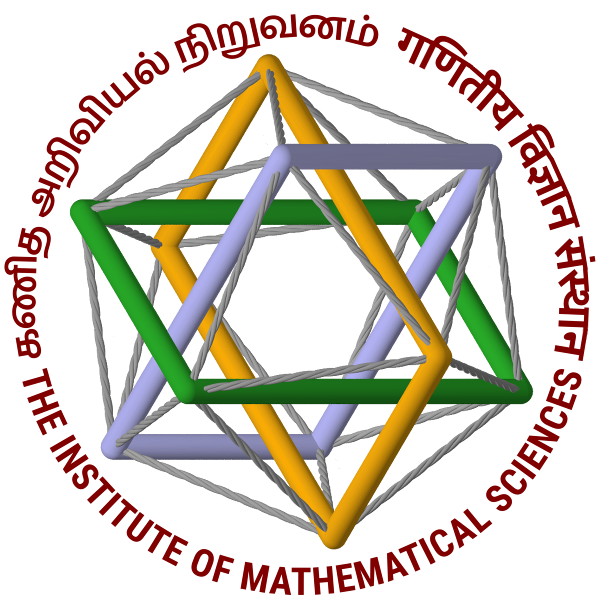A national institute for research in the theoretical sciences
Seminars
Apr 26
14:00-16:00
14:00-16:00
Group Meeting | IMSc
Mathematics Colloquium | Media Centre
Apr 28
09:00-18:00
09:00-18:00
Chennai String School 2025Chennai String School 2025
Conference | Alladi Ramakrishnan Hall
Apr 28
14:00-15:00
14:00-15:00
Algebraic Combinatorics Group | IMSc
Algebraic Combinatorics Group Meeting
Mathematics Seminar | Room 326
Apr 29
09:00-18:00
09:00-18:00
Chennai String School 2025Chennai String School 2025
Conference | Alladi Ramakrishnan Hall
Apr 29
15:30-16:30
15:30-16:30
Anup Dixit | IMSc
Mathematics Seminar | E C G Sudarshan Hall
Apr 30
09:00-18:00
09:00-18:00
Chennai String School 2025Chennai String School 2025
Conference | Alladi Ramakrishnan Hall
May 01
09:00-18:00
09:00-18:00
Chennai String School 2025Chennai String School 2025
Conference | Alladi Ramakrishnan Hall
May 02
09:00-18:00
09:00-18:00
Chennai String School 2025Chennai String School 2025
Conference | Alladi Ramakrishnan Hall
May 02
15:00-17:30
15:00-17:30
R Venkatesh | IISc
Mathematics Colloquium | E C G Sudarshan Hall
May 03
14:00-16:00
14:00-16:00
Group Meeting | IMSc
Mathematics Colloquium | Media Centre
May 09
15:30-16:45
15:30-16:45
Y K Gupta | BARC, Mumabi
TBA
Physics Seminar | Alladi Ramakrishnan Hall
May 10
14:00-16:00
14:00-16:00
Group Meeting | IMSc
Mathematics Colloquium | Media Centre
